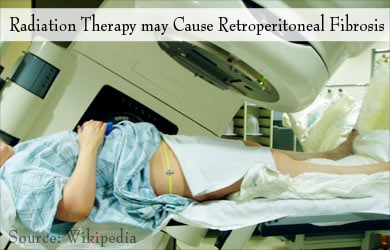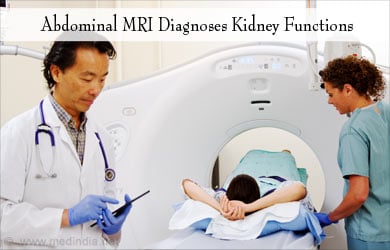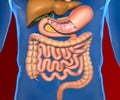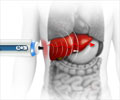- Kidney, Liver & Urinary Conditions - (http://www.med.nyu.edu/urology/patient-care-information/conditions-we-treat/retroperitoneal-fibrosis)
- Retroperitoneal Fibrosis Treatments - (http://www.urologists.org/article/treatments/retroperitoneal-fibrosis-treatments)
- Information About Retroperitoneal Fibrosis - (http://www.hopkinsmedicine.org/nephrology/retroperitoneal_fibrosis.html)
- Retroperitoneal fibrosis - (https://www.nlm.nih.gov/medlineplus/ency/article/000463.htm)
- About Retroperitoneal fibrosis - (https://en.wikipedia.org/wiki/retroperitoneal_fibrosis)
What is Retroperitoneal Fibrosis?
Retroperitoneal fibrosis is a rare inflammatory disorder that results in the formation of fibrous tissue, affecting the organs located at the back of the abdomen. It is also known as Ormond's disease after John Kelso Ormond, who re-discovered this condition in 1948.
The peritoneum is a tissue lining the abdomen in which organs like the stomach and intestines are located. Some organs like the kidneys, ureters, as well as parts of the aorta, inferior vena cava, colon, duodenum and pancreas lie outside this lining close to the posterior abdominal wall, in a part referred to as retroperitoneum. Fibrosis in this area, referred to as retroperitoneal fibrosis, can result in an obstruction of these structures. Some patients suffer from a severe form of the condition, called malignant retroperitoneal fibrosis. The condition worsens very fast in these patients, resulting in poor outcomes.

What are the Causes of Retroperitoneal Fibrosis?
Depending on the cause, retroperitoneal fibrosis is classified as primary (idiopathic), where the cause is not known or secondary, when it is likely to be due to some underlying condition. Around 70% cases are idiopathic. Conditions related to secondary retroperitoneal fibrosis include:
- Intake of medications including methysergide, pergolide, bromocriptine, ergotamines, methyldopa and hydralazine
- Cancers like lymphoma and carcinoid tumor, or those cancers that have spread from their site of origin. Radiation treatment for cancers could also be a cause of retroperitoneal fibrosis

- Infections like tuberculosis, histoplasmosis, and actinomycosis
- Recent abdominal or pelvic surgery, or trauma
Patients with retroperitoneal fibrosis often suffer from other immune-related conditions like Crohn’s disease, ulcerative colitis, and sclerosing cholangitis. Therefore, it has been suggested that retroperitoneal fibrosis may be due to altered immunity.
What are the Symptoms & Signs of Retroperitoneal Fibrosis?
Symptoms and signs linked to retroperitoneal fibrosis are often non-specific and include the following:
Early Symptoms:
- Dull abdominal pain that increases over time
- Pain and change in color of legs, due to reduced blood flow if the aorta or its main branches are affected
- Swelling of a leg, if the venous or lymphatic drainage from the limb is affected
- High blood pressure, which may be present in some cases
- Back pain, which may be due to the trapping of nerves in the fibrosis

Later symptoms:
- Several of the later symptoms occur when the urinary system is affected. These include decreased or no output of urine, and ureteric colic. The patient may also experience nausea, vomiting, confusion and reduced consciousness in the presence of kidney failure
- Inflammation of veins and deep vein thrombosis
- Severe abdominal pain with bleeding
- Other symptoms like fever, weight loss, malaise, pain in limbs while walking etc.
How is Retroperitoneal Fibrosis Diagnosed?
The first step in the diagnosis of retroperitoneal fibrosis is an imaging study. This can be in using CT scan, MRI or PET scan. If inflammation is detected surrounding the aorta or the kidney, biopsy of this area would be needed to accurately diagnose the condition, as well as to rule out cancer. A blood test is also done to check for kidney function, look for anemia, and markers of inflammation in the blood. High levels of an antibody called IgG4 has been noted in these patients.
Tests to evaluate kidney functions are:
- Blood tests that measure BUN (blood urea nitrogen)
- Imaging tests like ultrasound of kidney, abdominal MRI and CT scan. Intravenous pyelogram (IVP) is also available though it is not commonly used. In this test, a radio-opaque dye is injected into the blood, and its passage through the urinary system is studied using x-rays.

How is Retroperitoneal Fibrosis Treated?
Retroperitoneal fibrosis is treated with medications and surgery. Treatment depends on the stage of the disease at diagnosis.
Pharmacotherapy
Drugs like prednisone, azathioprine and mycophenolate have been found to be useful in patients with retroperitoneal fibrosis. These drugs suppress immunity and reduce inflammation associated with the condition. However, they are associated with side effects and therefore, the patient should be regularly monitored..
The estrogen receptor antagonist tamoxifen is also used for retroperitoneal fibrosis.
Surgery
Surgery is used in retroperitoneal fibrosis to separate the ureters from the obstructing mass and cover them with fatty tissue from the abdomen called omentum to prevent further obstruction. Stents can be used to keep the ureters open and facilitate drainage of urine.

What is the Prognosis of a Patient suffering from Retroperitoneal Fibrosis?
Prognosis or outcome of retroperitoneal fibrosis depends on the extent of kidney damage. If the condition is diagnosed and treated at an early stage, long-term outlook seems to be very good. Prognosis is poor in conditions of kidney failure. It is also poor in patients with malignant retroperitoneal fibrosis, who survive only for a few months following the diagnosis.
Health Tips
As most cases of retroperitoneal fibrosis can't be linked to any specific cause, prevention may not be possible. However, medications that cause retroperitoneal fibrosis like methysergide can be avoided. Talk to your health care provider about this if you are prescribed such medications, and if they can be substituted with some alternative medications.







